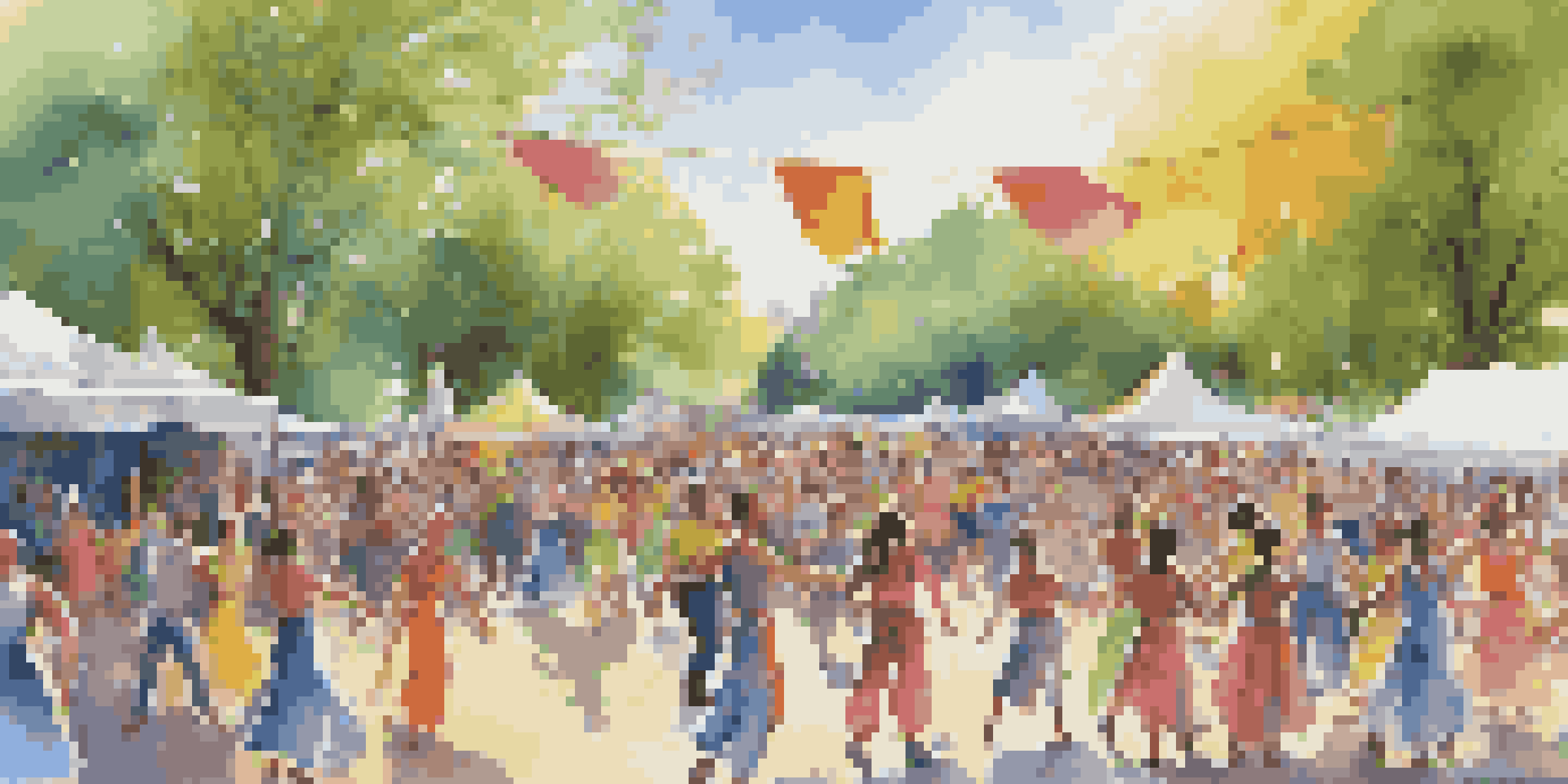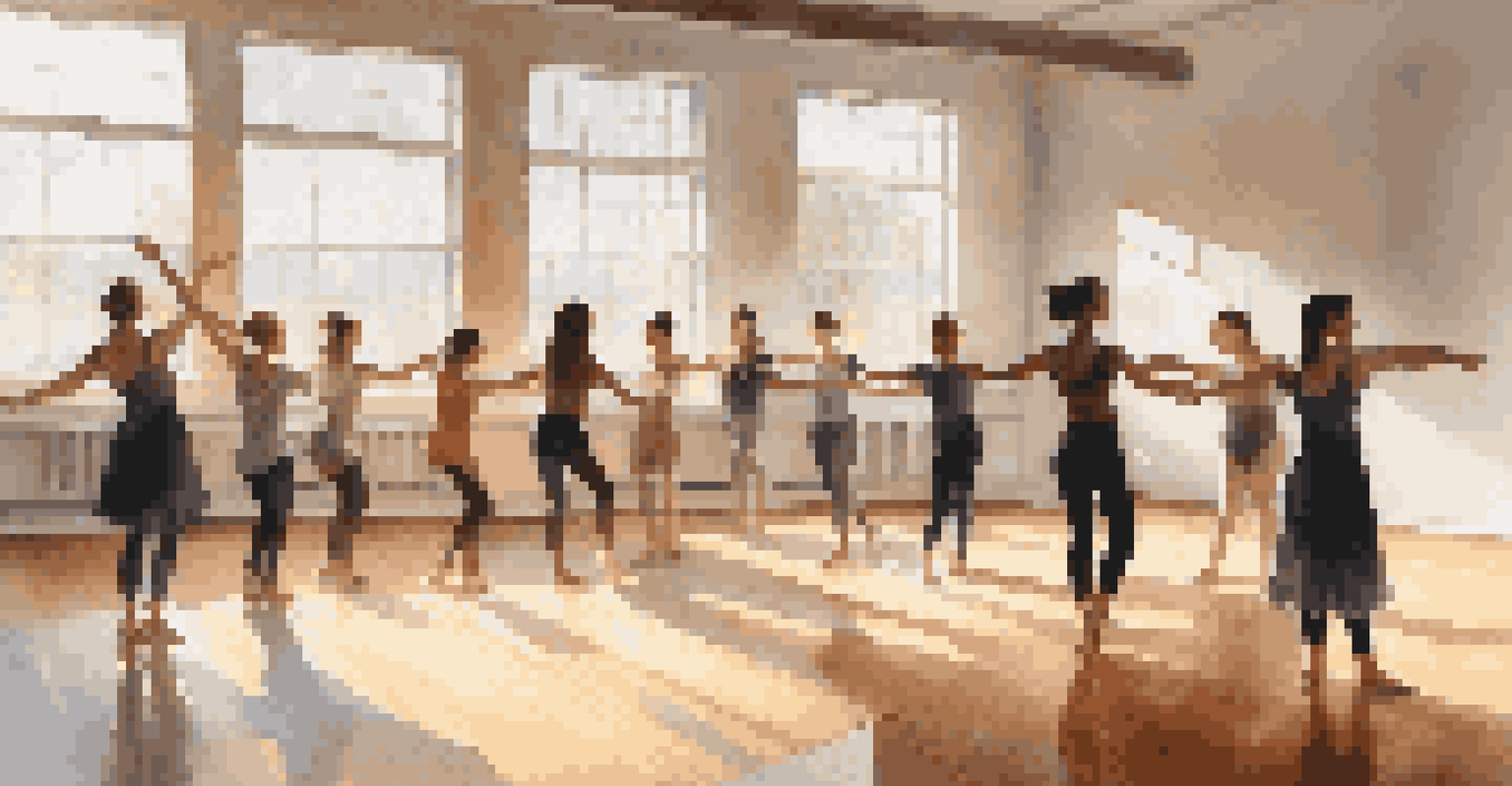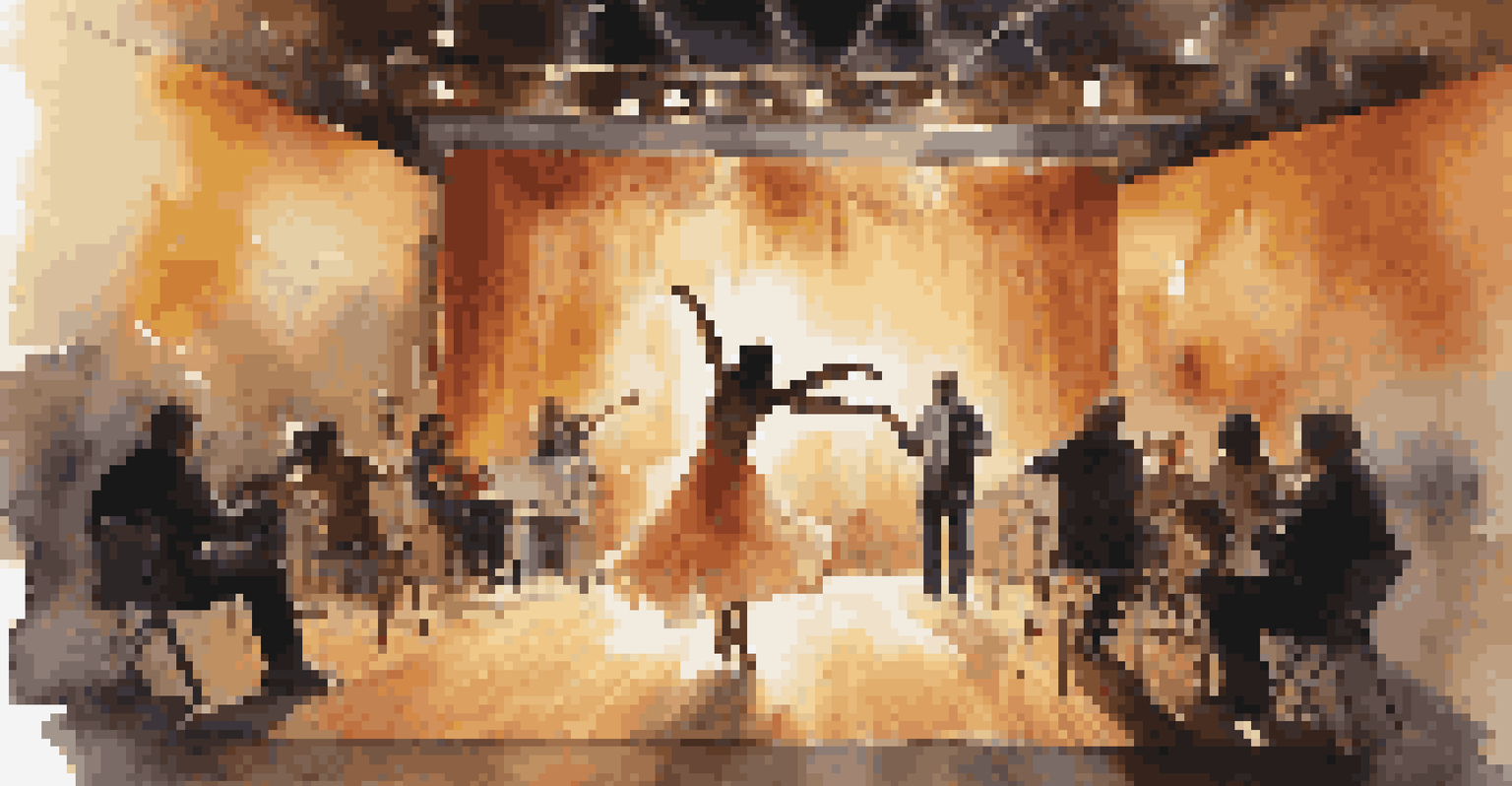Role of Local Governments in Supporting Dance Communities

Understanding the Role of Local Governments in Arts Support
Local governments play a crucial role in nurturing the arts, including dance. They provide funding, infrastructure, and resources that allow dance communities to thrive. When local officials recognize the value of dance as a cultural and community asset, they set the stage for growth and creativity.
Art is not a thing; it is a way.
For instance, many cities have established arts councils that allocate grants specifically for dance programs. These councils often partner with local dance studios, schools, and non-profits to develop initiatives that engage the community. This collaborative approach not only supports artists but also enhances the cultural fabric of the area.
Furthermore, local governments can advocate for dance education in schools, ensuring that future generations appreciate and participate in this vibrant art form. By prioritizing the arts, they create an environment where dance can flourish.
Funding Opportunities Available for Dance Communities
One of the most significant ways local governments support dance communities is through financial assistance. This funding can come in the form of grants, subsidies, or sponsorships for performances and events. Such financial backing is often critical for smaller dance companies or community programs that may lack the resources to operate independently.

Take, for example, a local dance festival that receives government funding. This support can help cover costs for venue rental, marketing, and artist fees, allowing the festival to showcase diverse talents without financial strain. This not only benefits the dancers but also draws audiences, enriching the local culture.
Local Governments Fuel Arts Growth
Local governments provide essential funding, resources, and advocacy to support and nurture dance communities.
Additionally, local governments may offer tax incentives to businesses that contribute to the arts, further encouraging local investment in dance. This creates a supportive ecosystem where artists can thrive, and the community can enjoy a vibrant dance scene.
Creating Accessible Spaces for Dance Communities to Flourish
Access to suitable venues is another critical aspect of local government support for dance communities. By providing public spaces such as community centers and parks, local governments facilitate opportunities for dance classes, rehearsals, and performances. This accessibility ensures that dance is available to everyone, regardless of their background.
The arts are an integral part of the fabric of our lives, and provide us with a sense of identity and belonging.
For instance, hosting free outdoor dance performances in city parks can attract diverse audiences and encourage participation in dance activities. These events not only entertain but also foster a sense of community and belonging among residents. They create a shared experience that can spark interest in dance as both a spectator and participant.
Moreover, local governments can also invest in dedicated dance studios or theaters, ensuring that dancers have the proper environments to practice and perform. This commitment to providing accessible spaces is fundamental in building a vibrant dance culture.
Promoting Dance Education and Training Programs
Local governments can significantly impact dance communities by promoting education and training programs. By partnering with schools and dance organizations, they can create curricula that integrate dance into physical education or arts classes. This exposure helps cultivate a love for dance among young people and encourages them to pursue it further.
Additionally, workshops and masterclasses led by professional dancers can be sponsored by local governments, providing community members with high-quality training opportunities. These programs can be particularly beneficial for underserved populations, offering them access to the arts they may not have otherwise.
Accessible Spaces Enhance Participation
By creating accessible venues for performances and classes, local governments ensure that dance is available to everyone in the community.
Investing in dance education not only nurtures talent but also builds a knowledgeable audience for future performances. This cycle of learning and participation strengthens the entire dance community and enriches local culture.
Encouraging Collaboration Between Dance Groups and Other Arts
Local governments often encourage collaboration between dance groups and other art forms, enriching the cultural landscape. By facilitating partnerships between dancers, musicians, visual artists, and theater companies, they create interdisciplinary projects that captivate audiences. This collaboration can lead to innovative performances that push creative boundaries.
An example of this might be a community event where dancers perform alongside live musicians, creating a multisensory experience for attendees. These types of collaborations not only enhance the visibility of dance but also showcase the richness of local talent.
Moreover, local governments can host arts festivals that feature a variety of performances, encouraging different art forms to intersect. This not only fosters a sense of community among artists but also engages broader audiences, making the arts more accessible and enjoyable.
Advocacy and Policy Development for Dance Support
Advocacy is a vital role that local governments can play in supporting dance communities. By developing policies that prioritize the arts, they can create a framework for sustainable growth in the dance sector. This advocacy can take many forms, from protecting funding for arts programs to promoting the inclusion of dance in community planning.
For example, a local government might establish a cultural plan that identifies dance as a key component of its artistic landscape. This plan could outline goals for funding, education, and community engagement, ensuring that dance receives the attention it deserves.
Collaboration Enriches Cultural Landscape
Encouraging partnerships between dance groups and other art forms leads to innovative performances and a richer cultural experience.
Additionally, local officials can serve as ambassadors for dance, attending performances and engaging with artists. This visibility reinforces the importance of dance in the community and can inspire further support from the public and private sectors.
The Impact of Local Government Support on Community Engagement
When local governments actively support dance communities, the impact on community engagement can be profound. Residents who see their government investing in the arts are more likely to participate in local cultural events and activities. This increased engagement fosters a sense of pride and ownership among community members.
For instance, a local dance competition sponsored by the government can encourage not only dancers but also families and friends to attend and cheer for their loved ones. This creates a festive atmosphere that brings people together, strengthening community bonds.

Moreover, as dance becomes a focal point in community activities, it can also lead to greater cultural awareness and appreciation. Diverse dance styles and traditions can be celebrated, allowing residents to learn from each other and embrace their differences.